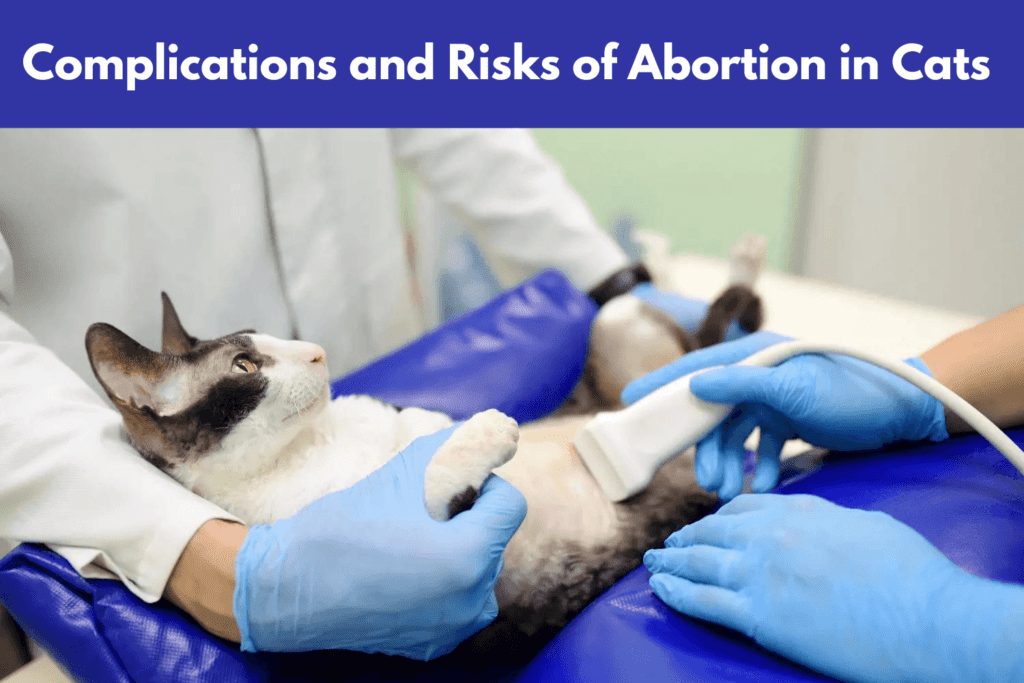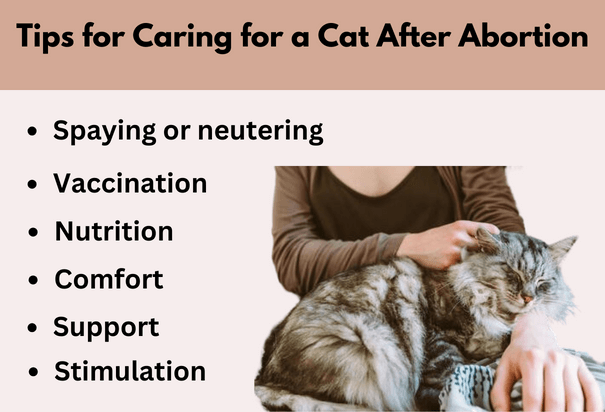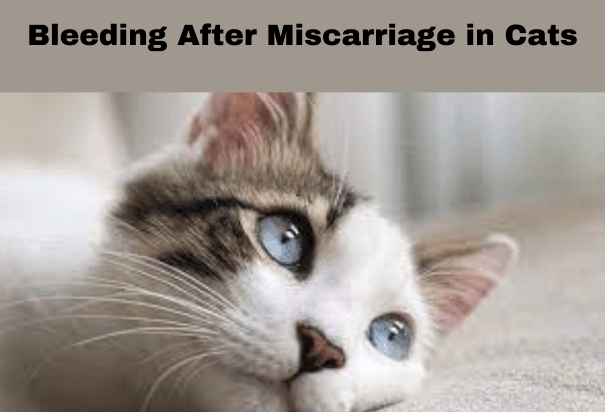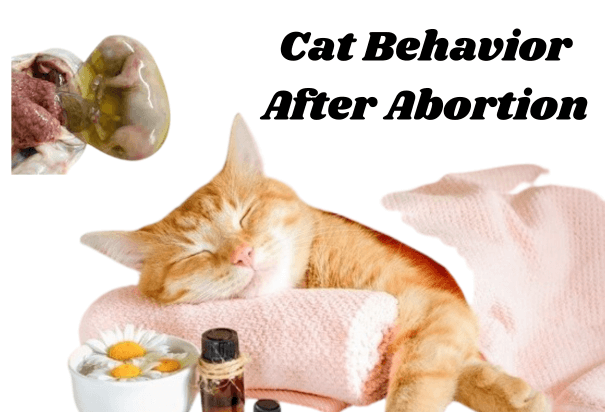Abortion is the termination of pregnancy before the fetus is viable. It can affect cats in various ways, depending on the cause, type, and stage of abortion. Abortion can have physical and emotional consequences for cats, such as depression, infection, infertility, and behavioral changes. Therefore, it is important to understand whether can cats have an abortion and address cat behavior after abortion.
The main causes of abortion in cats are infections, trauma, genetic defects, hormonal imbalance, and human intervention. There are two types of abortion in cats: spontaneous and induced.
Spontaneous abortion occurs naturally without any external influence, while induced abortion is deliberately performed by a veterinarian or an owner. The type and timing of abortion can influence the severity and duration of its effects on cats.
According to a study by [PetMD], about 10% of pregnant cats experience spontaneous abortion. The most common cause of spontaneous abortion in cats is the feline panleukopenia virus (FPV), which can infect up to 90% of unvaccinated cats.
Induced abortion in cats is usually done for medical or ethical reasons, such as severe illness, overpopulation, or unwanted cat pregnancy The methods of induced abortion in cats include surgical removal, injection of prostaglandins, or administration of mifepristone. Induced abortion in cats is generally safe and effective if done by a qualified veterinarian.
Contents
- 1 Physical and Emotional Symptoms of Depression in Cats’ Behavior After Abortion
- 2 Possible Complications and Risks of Abortion in Cats
- 3 Best Practices and Tips for Caring for a Cat After Abortion
- 4 How long does it take for a cat to recover from abortion?
- 5 Conclusion
- 6 FAQs About Cat Behavior After Abortion
Physical and Emotional Symptoms of Depression in Cats’ Behavior After Abortion
Do cats get depressed after an abortion? One of the most common and serious effects of abortion in cats is depression. Depression is a state of low mood and reduced activity that can affect a cat’s physical and mental health. Depression in cats after miscarriage can manifest in various ways, such as:
- Confusion: A cat may seem disoriented, restless, or lost after an abortion. It may wander around aimlessly, forget its routine, or show signs of cognitive decline.
- Loss of appetite: A cat may lose interest in food and water after an abortion. It may eat less, vomit, or develop anorexia or dehydration.
- Lethargy: A cat may become less active and energetic after an abortion. It may sleep more, play less, or avoid social interaction.
- Aggression: A cat may become more irritable and hostile after an abortion. It may hiss, scratch, bite, or attack other animals or humans.
- Other symptoms: A cat may also exhibit other signs of depression after abortion, such as hiding, grooming excessively, vocalizing more or less, or changing its litter habits.
The causes of depression in cats after miscarriage are mainly related to hormonal imbalance, stress, and anxiety. Hormonal imbalance occurs when a cat’s reproductive hormones drop suddenly after abortion.
This can affect a cat’s mood, behavior, and physiology. Stress and anxiety occur when a cat experiences trauma, pain, or loss after an abortion. This can trigger a cat’s fight-or-flight response, which can lead to emotional and physical distress.
To diagnose depression in cats after abortion, a veterinarian may perform a physical examination, blood tests, urine tests, or ultrasound to rule out any medical conditions that may cause similar symptoms.
A veterinarian may also ask about a cat’s history, environment, and behavior to assess its mental state. To treat depression in cats after abortion, a veterinarian may prescribe antidepressants, anti-anxiety drugs, or painkillers to help a cat cope with its emotions and discomfort.
A veterinarian may also suggest behavioral therapy, environmental enrichment, or alternative therapies to help a cat recover from its trauma and loss.
Possible Complications and Risks of Abortion in Cats

Abortion in cats can also have some complications and risks that may affect a cat’s health and well-being. Some of the possible complications and risks of abortion in cats are:
- Infection: A cat may develop an infection in the uterus, ovaries, or other organs after abortion. Infection can cause fever, discharge, inflammation, pain, or septic shock. Infection can also spread to other parts of the body and cause systemic illness.
- Hemorrhage: A cat may bleed excessively from the vagina, uterus, or other sites after abortion. Hemorrhage can cause anemia, weakness, shock, or death. Hemorrhage can also lead to blood clots or embolisms that can obstruct blood vessels and damage vital organs.
- Infertility: A cat may lose its ability to conceive or carry a pregnancy after an abortion. Infertility can result from scarring, adhesions, or damage to the reproductive organs after abortion. Infertility can also result from hormonal imbalance or immune system dysfunction after abortion.
- Other complications and risks: A cat may also experience other complications and risks after abortion, such as uterine rupture, retained fetal tissue, pyometra, mastitis, eclampsia, or cancer.
To prevent and manage complications and risks of abortion in cats, a veterinarian may perform a follow-up examination, blood tests, urine tests, or ultrasound to monitor a cat’s recovery and detect any signs of trouble.
A veterinarian may also prescribe antibiotics, anti-inflammatory drugs, or hormonal supplements to help a cat heal and prevent infection or imbalance. A veterinarian may also advise on how to care for a cat’s wounds, stitches, or incisions after abortion.
Best Practices and Tips for Caring for a Cat After Abortion
Understanding cat behavior after abortion and caring for a cat after abortion is crucial for its physical and emotional recovery. Some of the best practices and tips for caring for a cat after an abortion are:
- Spaying or neutering: Spaying or neutering is the surgical removal of a cat’s reproductive organs. Spaying or neutering can prevent unwanted pregnancies, reduce the risk of infections or cancers, and improve a cat’s behavior and health.
- Vaccination: Vaccination is the administration of a substance that stimulates a cat’s immune system to protect it from certain diseases. Vaccination can prevent infections that can cause abortion in cats, such as FPV, feline leukemia virus (FeLV), feline immunodeficiency virus (FIV), or feline herpesvirus (FHV).
- Nutrition: Nutrition is the provision of food and water that meets a cat’s dietary needs. Nutrition can help a cat recover from abortion by providing energy, protein, vitamins, minerals, and fluids. Nutrition can also help a cat maintain its weight, coat, and skin quality.
- Comfort: Comfort is the provision of warmth, safety, and relaxation for a cat. Comfort can help a cat cope with depression after abortion by reducing stress, anxiety, and pain. Comfort can also help a cat bond with its owner and other animals.
- Support: Support is the provision of love, affection, and attention for a cat. Support can help a cat overcome depression after abortion by increasing its confidence, happiness, and socialization. Support can also help a cat express its emotions and needs.
- Stimulation: Stimulation is the provision of fun, challenge, and variety for a cat. Stimulation can help a cat combat depression after abortion by enhancing its curiosity, intelligence, and creativity. Stimulation can also help a cat exercise its body and mind.

How long does it take for a cat to recover from abortion?
The recovery time for a cat after abortion depends on the cause, type, and stage of abortion, as well as the presence of any complications or infections. According to PetMD, most cats recover from abortion within a few days, but some may need up to two weeks of rest and care. Some factors that may affect the recovery time are:
- The cause of abortion: If the abortion was caused by an infection, such as feline leukemia virus, feline immunodeficiency virus, panleukopenia, feline herpesvirus, or feline enteric coronavirus, the cat may need additional treatment and monitoring to clear the infection and prevent recurrence. If the abortion was induced by a veterinarian or an owner for medical or ethical reasons, the cat may need pain relief and antibiotics to prevent infection and inflammation.
- The type of abortion: If the abortion was spontaneous and early (before 45 days), the embryo may be reabsorbed into the body and the cat may not show any signs of miscarriage. If the abortion was spontaneous and late (after 45 days), the cat may pass stillborn kittens, mummified fetuses, or retained fetal tissue.
These outcomes may require surgical intervention or medication to remove any remaining material from the uterus and prevent infection or hemorrhage. If the abortion was induced by surgical removal, injection of prostaglandins, or administration of mifepristone, the cat may need stitches, wound care, or hormonal supplements to help heal and restore balance.
- The stage of abortion: The later the stage of abortion, the more likely the cat will experience physical and emotional trauma. The cat may lose more blood, fluids, and nutrients during a late-term abortion than an early-term abortion. The cat may also suffer from depression, stress, anxiety, or hormonal imbalance after losing its pregnancy. These effects may require more time and attention to recover.
Bleeding After Miscarriage in Cats
Bleeding after miscarriage in cats is a possible complication that may indicate infection, hemorrhage, or retained fetal tissue. The amount and duration of bleeding vary depending on the cause, type, and stage of miscarriage. in this situation, most of the time cat leaves blood spots on the bed.
Most cats do not bleed much after giving birth, but if there is a late-stage miscarriage, veterinary help is necessary. Therefore, it is important to take a cat to the vet if there is any abnormal or excessive bleeding after a miscarriage. To help a cat recover from a miscarriage, it is important to follow the veterinarian’s instructions and provide proper care and support for the cat.

How to Pass Retained Tissue Naturally After Abortion
Retained tissue after abortion refers to fetal or placental tissue that remains in the uterus after a cat pregnancy is terminated. This can cause bleeding, infection, and other complications. Sometimes, the retained tissue can pass naturally from the body within about two weeks. However, this may not always happen, and some women may need medical intervention to remove the tissue.
Some natural remedies may help to pass retained tissue after abortion, but they are not proven to be effective or safe. These remedies should not replace medical advice or treatment, and they should be used with caution and under proper supervision. Some of these remedies are:
- Vitamin C: Vitamin C is a nutrient that can help promote healing and prevent infection. Vitamin C may be found in several fresh fruits, such as breadfruit, guava, papaya, oranges, and mangos. However, taking too much vitamin C can cause side effects such as diarrhea, nausea, or kidney stones.
- Red raspberry leaf: Red raspberry leaf is an herb that can help to tone and contract the uterus. It may also help to reduce bleeding and inflammation. Red raspberry leaf can be taken as a tea or a capsule. However, it may interact with some medications or cause allergic reactions.
- Misoprostol: Misoprostol is a medication that can induce contractions and expel the retained tissue. It can be taken orally or vaginally. However, it may cause side effects such as cramping, bleeding, fever, or infection. It should only be used under medical guidance and with proper follow-up.
The best way to pass retained tissue after abortion is to seek medical help as soon as possible. A doctor can diagnose the condition and prescribe the appropriate treatment. The treatment options may include:
- Medication: A doctor may prescribe medication such as misoprostol or antibiotics to help the uterus expel the tissue and prevent infection.
- Dilation and curettage (D&C): A D&C is a minor surgical procedure that involves dilating the cervix and scraping out the tissue from the uterus. It is usually done under anesthesia and with sterile instruments.
- Hysteroscopy: A hysteroscopy is a procedure that involves inserting a thin tube with a camera and a light into the uterus through the vagina. The doctor can see the inside of the uterus and remove any tissue using special tools. Passing retained tissue after abortion can be a difficult and painful experience. During this period, it is crucial to look after your mental and physical well-being. Here are some suggestions for getting well: Take it easy and give yourself some time to heal from the abortion. For at least a week, refrain from heavy lifting and intense exercises.
- Hydrate and nourish: Drink plenty of fluids and eat healthy foods to replenish your energy and nutrients. Avoid alcohol, caffeine, and spicy foods that may irritate your stomach or uterus.
- Manage pain and bleeding: Use over-the-counter painkillers such as ibuprofen or acetaminophen to ease cramps or discomfort. Use pads or sanitary napkins to absorb bleeding. Do not use tampons or douche until your doctor says it is safe.
- Monitor your symptoms: Watch for signs of infection or complications such as fever, foul-smelling discharge, severe pain, heavy bleeding, or fainting. Contact your doctor if you have any of these symptoms or if you do not pass any tissue within two weeks.
- Seek support: Talk to someone you trust about your feelings and emotions after the abortion. You may also seek professional counseling or join a support group if you need more help.
How Much Is a Cat Abortion?
A cat abortion is the termination of a cat’s pregnancy before the fetus is viable. It can be performed for medical or personal reasons. There are several methods of cat abortion, such as surgical, medical, or spontaneous. The cost of a cat abortion may vary depending on the location, the veterinarian, the method, and the stage of pregnancy.
According to some web search results, a typical spontaneous abortion costs between $200 and $1,500 based on 521 quotes. A surgical abortion, which involves the removal of the fetus through a small incision in the abdomen, may cost between $50 and $1502.
A medical abortion, which involves the administration of medication to terminate the pregnancy, may cost between $40 and $1003.These costs may not include other fees such as consultation, anesthesia, or follow-up care.
Therefore, it is advisable to consult with your veterinarian to discuss the best course of action for you and your cat.
Conclusion
Abortion is the termination of pregnancy before the fetus is viable. It can affect cats in various ways, depending on the cause, type, and stage of abortion.
Abortion can have physical and emotional consequences for cats, such as depression, infection, infertility, and behavioral changes. Therefore, it is important to understand and address cat behavior after abortion.
FAQs About Cat Behavior After Abortion
Q: Can cats have an abortion and What are the main causes of abortion in cats?
A: The primary causes include infections, trauma, genetic defects, hormonal imbalance, and human intervention.
Q: How common is depression in cats after abortion, and what are the signs to look for?
A: Depression is a common effect. Signs include confusion, loss of appetite, lethargy, aggression, and other behavioral changes.
Q: What are the possible complications and risks associated with cat abortion?
A: Complications may include infection, hemorrhage, infertility, and other risks. Regular veterinary follow-ups are essential.
Q: What are the best practices for understanding cat behavior after abortion and caring for a cat?
A: Practices include spaying/neutering, vaccination, proper nutrition, providing comfort, emotional support, and environmental stimulation.
Q: How long does it take for a cat to recover from abortion, and what factors influence the recovery time?
A: Most cats recover within a few days to two weeks, influenced by the cause, type, and stage of abortion, along with any complications or infections.




